Departure Date: September 1 - 12, 2025
Compiled By: Doris Valencia
Trip Leaders: Doris Valencia, Local Leader
Toll Free: 800.328.8368
Phone: 512.328.5221
Southern Peru: Feathers & Traditions 9/1/2025-9/12/2025

https://ebird.org/tripreport/411857
Early September marked the beginning of one of the most rewarding journeys I have guided in recent years, our fairly new Feathers & Traditions Tour. This was its second departure. The name says it all: this itinerary blends the natural richness of the Andes and cloud forests with the cultural traditions, history, and daily life of Peru. It is more than a birding trip; it is a way to see the country through multiple lenses: through feathers, traditions, landscapes, and certainly people.
Some travelers arrived in Lima a day or two early to do additional sightseeing on their own, and as always, we were happy to assist with any arrangements. But the real adventure began when our group of ten fearless travelers officially came together and flew into Cusco on September 2nd. For me, it is hard to describe the pleasure and delight in showing people around my home region—not just the birds but also my culture, my people, and my stories.
Settling into the Rhythm
One of the small but important elements of this trip was the pace. Unlike many birding tours where mornings start painfully early, here we did not rise at an unreasonable hour; instead, we enjoyed hearty hot breakfasts every day, with local breads, fresh fruit, eggs, coffee, and juice. And we never went hungry in the field either; snacks were always on hand. That rhythm, early enough to seize the best hours of bird activity but never rushed, kept the group happy and energized. The weather was also on our side. The Andes can be unpredictable, but this week the skies seemed to smile on us. With only minor adjustments needed, we were able to follow the itinerary as planned.
Lagoons, Gardens, and Hummingbird Magic
Our first field explorations took us to high-elevation lagoons with reed beds, the Ramsar site of Huacarpay. Here we admired teals, ducks, ibises, gulls, and a variety of passerines. The thin air at altitude slowed our pace, but the birds rewarded every step. In the background, the dramatic mountains framed the scene, their peaks alternating between sharp shadows and brilliant light as clouds passed.
A highlight soon followed in the Urubamba Valley, where we visited a couple of hummingbird gardens. Few birds delight a group as much as hummingbirds—their colors, their speed, and their almost mythical energy. Here we had fabulous views of several specialties, but the star was without doubt the Bearded Mountaineer. Endemic and very localized, it is one of those species that will draw a smile on everyone's face. The more widespread hummingbirds were equally enchanting. While we were enjoying the dazzling display of hummingbirds in one of the gardens, we were suddenly rewarded with an unexpected visitor, the elusive Undulated Antpitta. This shy Andean bird is notoriously difficult to see, yet it gave us wonderful views and even enough time for photos. For a brief moment it hopped around on the ground, feeding calmly before vanishing back into the undergrowth. We all felt incredibly fortunate to be in the right place at the right time.
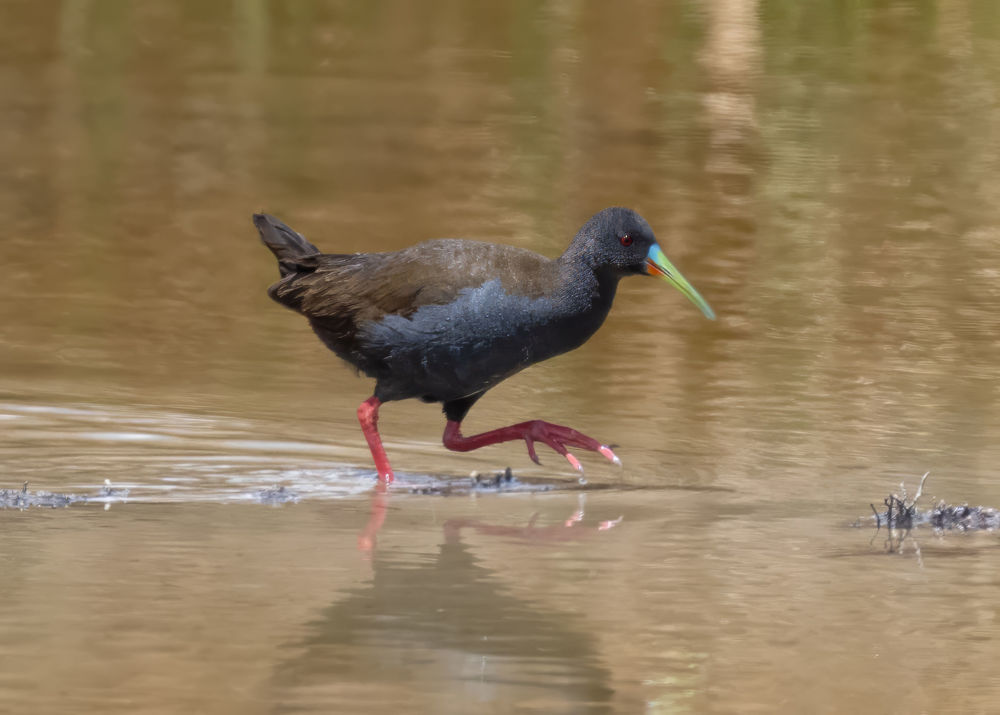
Plumbeous Rail © Alan Bloom
Moray, a mystery
A truly magical morning came when we visited the mysterious site of Moray. Despite all the reading I have done, Moray remains an enigma. Its concentric circular terraces may have served as an agricultural laboratory, or perhaps as ceremonial spaces; scholars still debate their purpose. Standing there, the imagination runs wild. We arrived early enough that the site was practically empty, a rare privilege in such a popular destination. To walk quietly along the terraces, without crowds, felt like traveling back in time. The travelers sensed it too; I truly believe everyone enjoyed the silence and the nice crisp air. Adding to the moment, the birding was awesome. We had killer looks at the endemic Rusty-fronted Canastero. I honestly cannot remember seeing this bird so well, especially with a group this size. It was a combination of luck, patience, and the right timing.
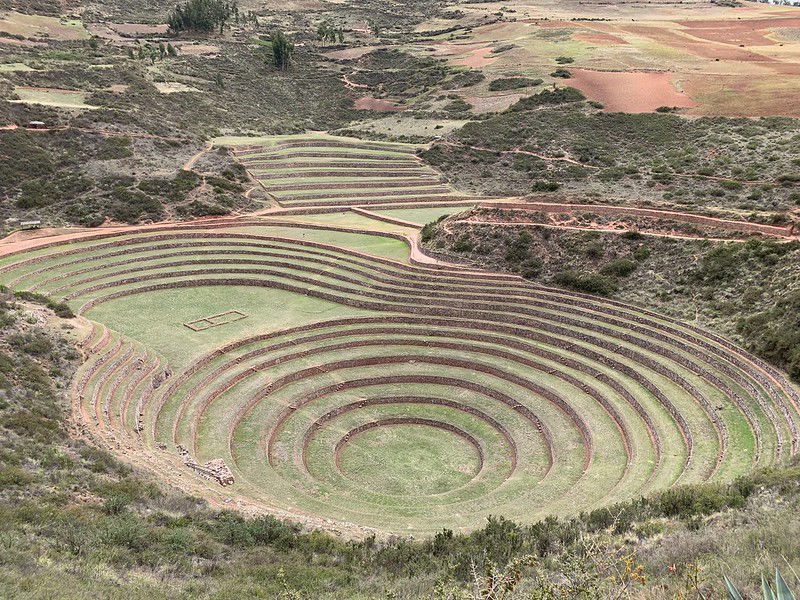
Moray site © Doris Valencia
A Weaving Community with Flora
From Moray, we continued our journey with a visit to my dear friend Flora in her Andean community. If Moray connected us with the mysteries of the past, this encounter connected us with living tradition. We were welcomed like family, introduced to several of Flora’s close relatives, and invited to sit with them as they shared the art of Andean weaving. The women patiently explained each step of the process. First came the gathering of fibers from llamas, alpacas, and sheep. Then the cleaning and spinning, often done by hand with simple tools. Natural dyes came from plants, minerals, and even insects, producing a rich palette of colors. Finally, the fibers were set onto the back-strap loom, where skill and patience created textiles with intricate patterns and designs.
This was not just a demonstration; it was a story of resilience. As Flora explained, many young people no longer wish to learn these skills; modern clothing and synthetic fabrics are easier, cheaper, and more fashionable. To keep the tradition alive, the community organizes weekend workshops for children, hoping to spark pride and continuity. Watching the women weave, the travelers were deeply moved. It was clear that these designs were not only beautiful but also carriers of memory and identity This experience embodied the essence of our tour. The birds alone are extraordinary, but when combined with human stories, they become part of a wider landscape, meaning, and purpose.
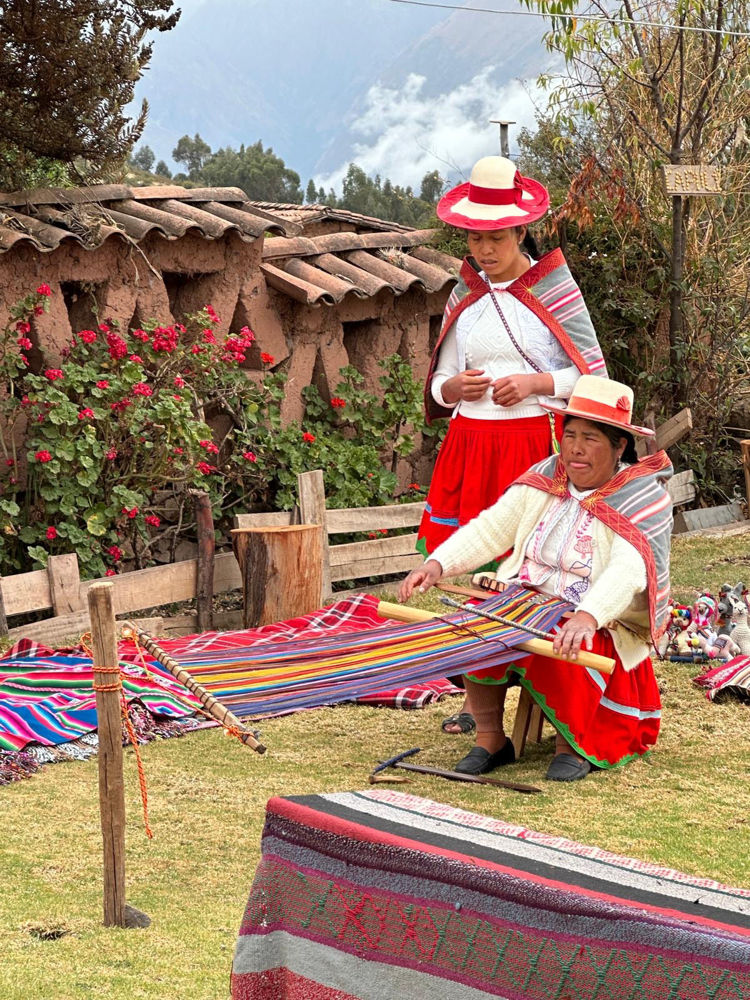
Andean weaving session © Doris Valencia
High Andes Birding
A full day was dedicated entirely to high-elevation birding. These habitats are demanding but rewarding, and the group embraced the challenge. The scenery was grand with great views of the Urubamba mountain range with peaks over 18,000 ft. High elevation grasses, elfin forest, and upper montane forest were the perfect scenery for excellent birding. Our efforts were rewarded with sightings of the Creamy-crested Spinetail and the dazzling White-tufted Sunbeam, both endemics and both crowd favorites. Other highlights included the colorful Tit-like Dacnis, over 100 Puna Ibises, Crested Ducks, Andean Geese, and several tanager species. At altitude, every sighting feels earned, and the sense of triumph in the group was palpable.
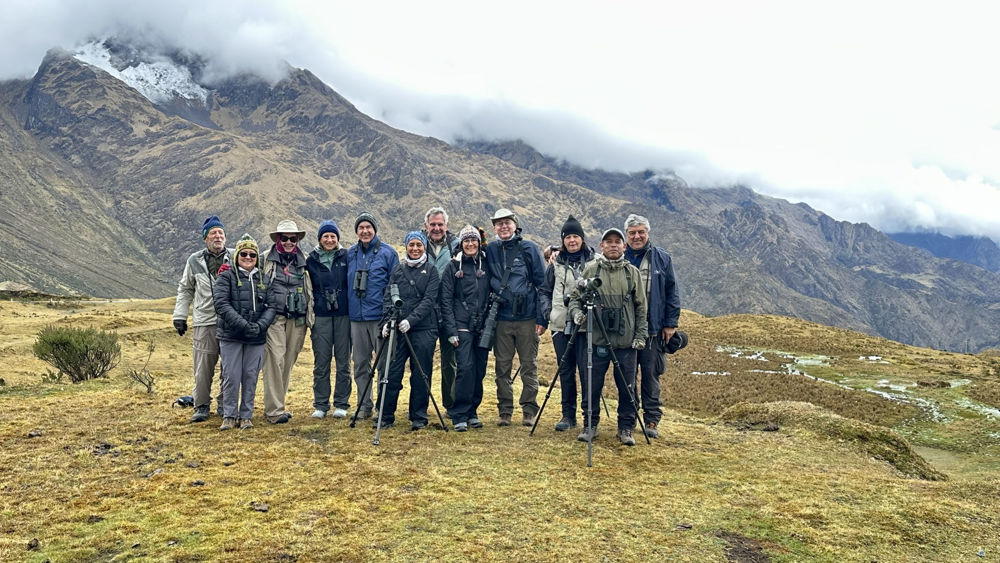
Birding at 14,200 ft Málaga Pass © Doris Valencia
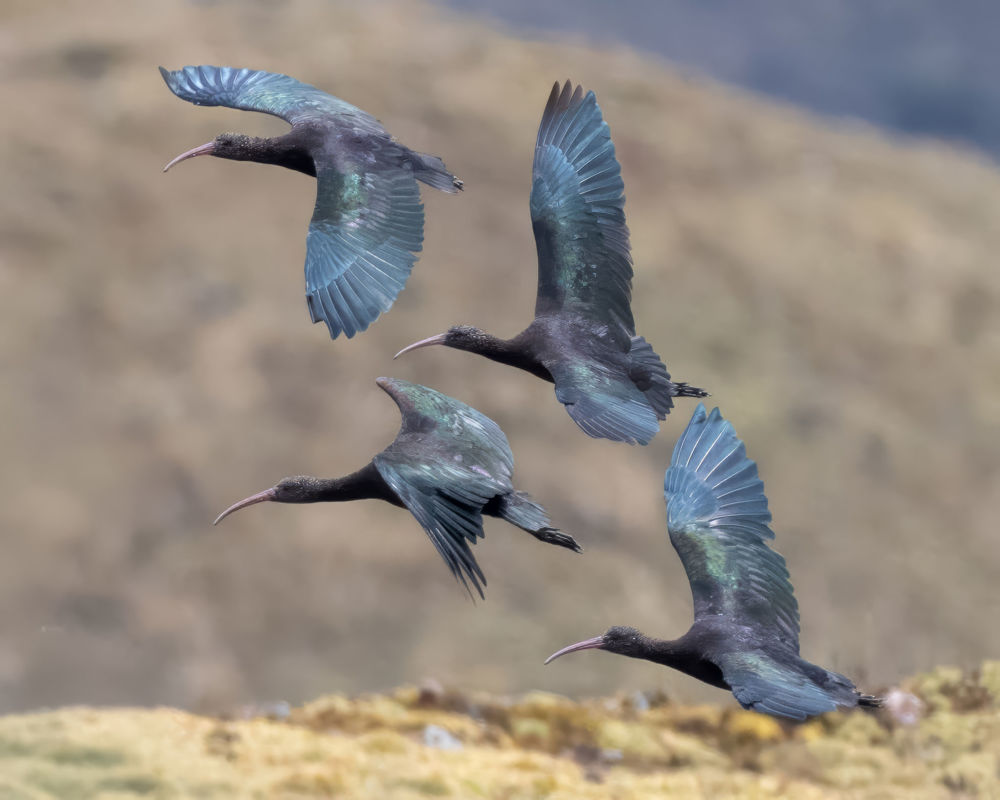
Puna Ibis © Alan Bloom
Machu Picchu: The Icing on the Cake
No matter how many times I visit, Machu Picchu never loses its magic. From Ollantaytambo we boarded the train for a 90-minute ride into an entirely different world. The dry Andean valleys gave way to lush tropical cloud forest, a very interesting ecological and cultural transition. We did what few groups attempt: we dedicated two full days to Machu Picchu. This decision allowed us to explore the site in depth, to wander without rush, and to absorb its atmosphere while learning about the people who planned and built it, their vision, precision, and harmony with the landscape. The birding here was equally memorable. Around our hotel grounds we found colorful tanagers and new hummingbird species. As we checked in, we were greeted by none other than a male Andean Cock-of-the-rock feeding quietly on palm nuts, a welcome committee like no other. On the trails we encountered Russet-crowned Warbler, Chestnut-capped Brushfinch, Andean Guan and Motmot, and as a major surprise, we had excellent scope views of the elusive Blue-banded Toucanet across the river. Machu Picchu was indeed the icing on the cake, blending world-class culture with equally world-class birding.
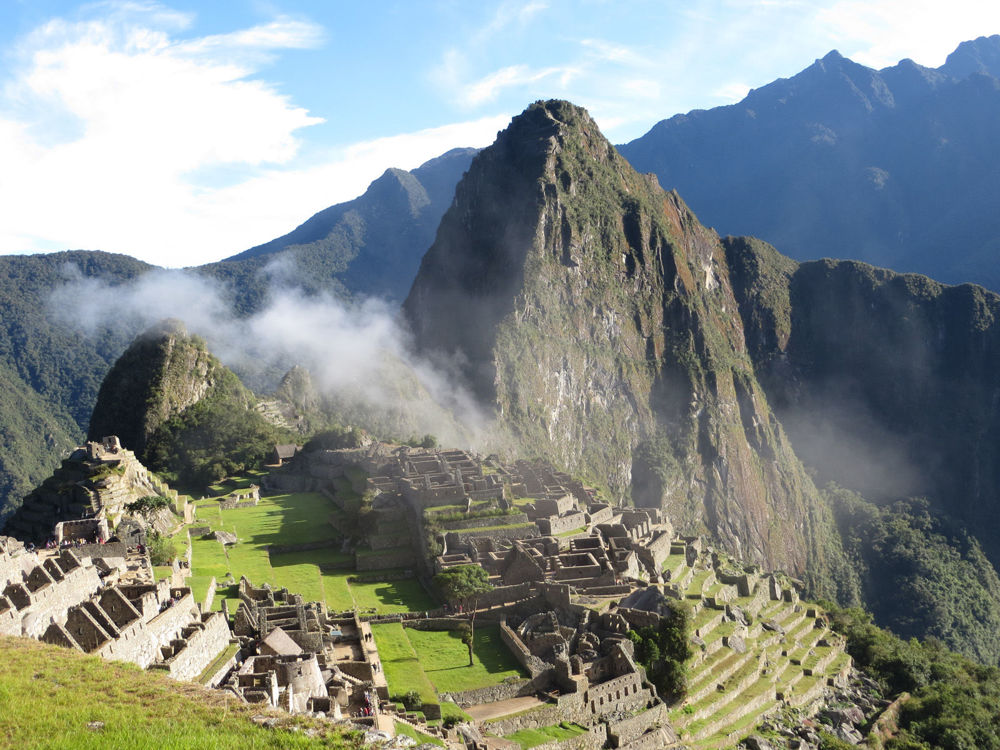
Machu Picchu forever © Doris Valencia
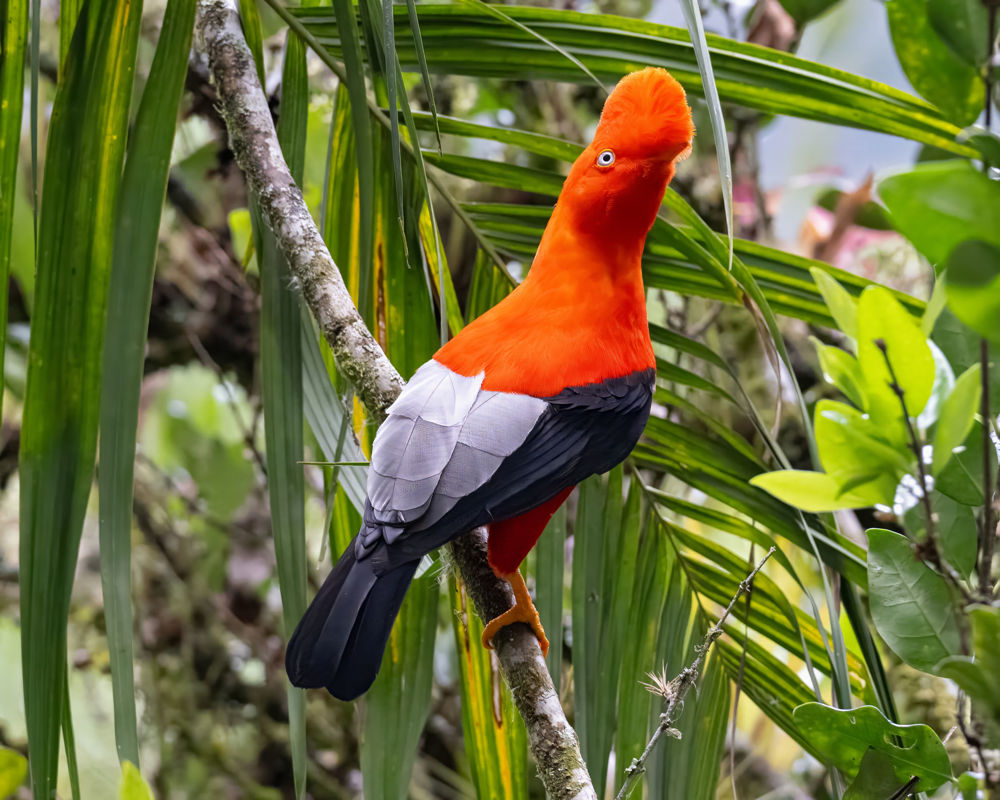
Male Andean Cock-of-the-rock © Alan Bloom
Ollantaytambo: A Living Inca Town
After Machu Picchu, we returned to the charming town of Ollantaytambo, unique for being the only continuously inhabited Inca town in existence. Walking its cobbled streets felt like stepping into a living museum. Travelers delighted in the mixture of daily life—children playing, vendors, farmers carrying on their daily lives against a backdrop of ancient stone walls.
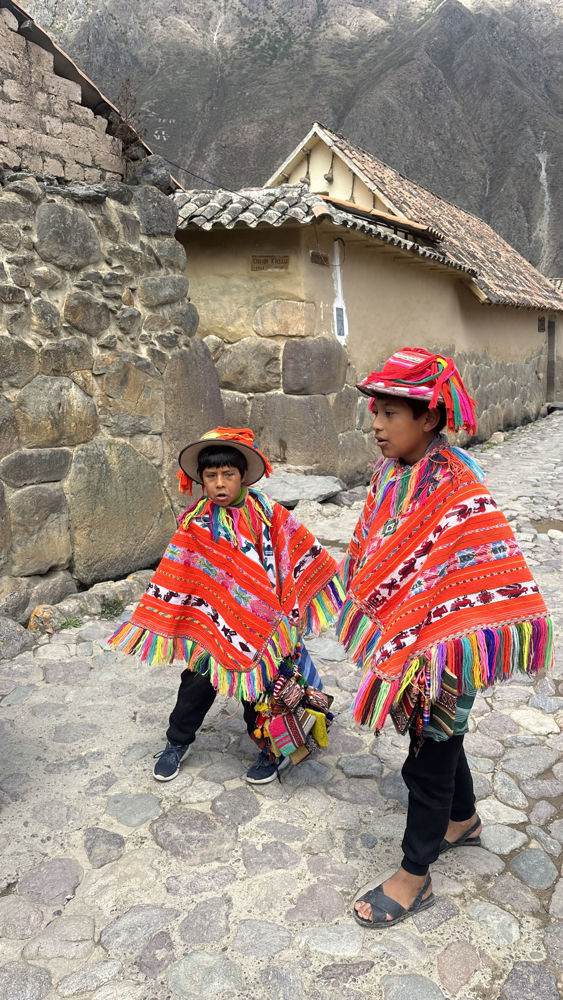
Kids of the community of Willoq at Ollantaytambo © Doris Valencia
Apurímac Valley and the Condors
From Ollantaytambo we continued into a completely different watershed: the Apurímac River Valley. Here, a comfortable glamping facility became our base, and the nearby forests gave us opportunities to appreciate species with highly restricted ranges. We found not one but two Apurímac Brushfinches and Apurímac Spinetails. Other highlights included the Tawny-rumped Tyrannulet, Red-crested Cotinga, and the striking Crimson-mantled Woodpecker.
Then came one of the most anticipated experiences: the hike to the condor lookout. The two-mile walk brought us to a viewpoint over the immense Apurímac Canyon. The green and brown slopes dropped steeply into the river far below, creating a dramatic stage. As we watched, a male Andean Condor appeared, soaring effortlessly, soon joined by two immatures.
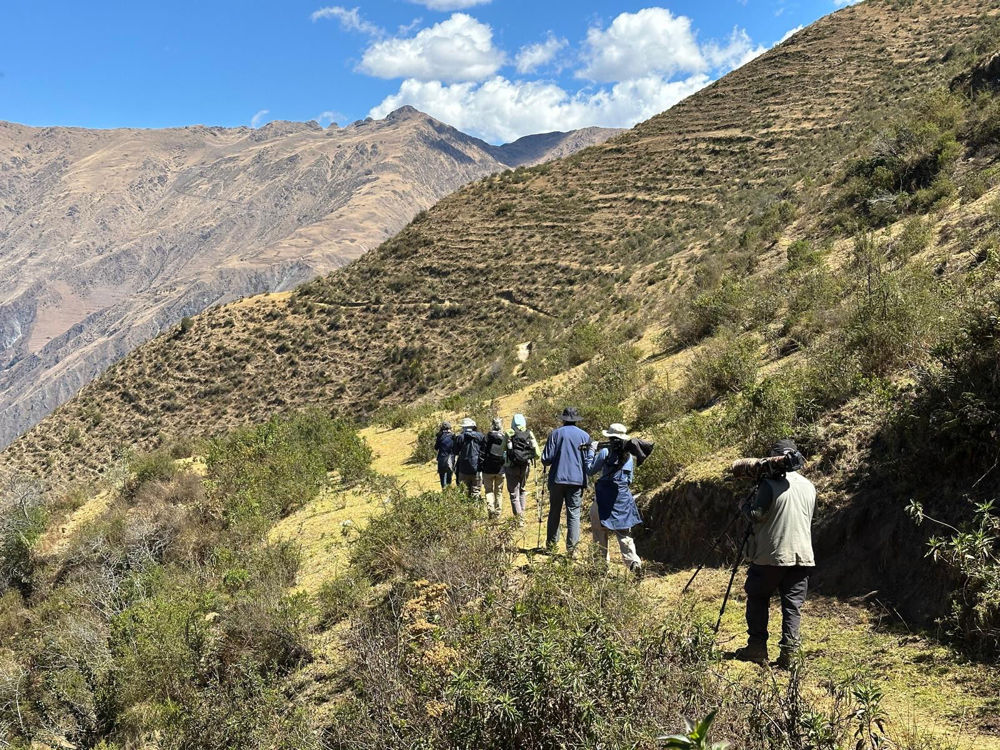
Hike to Condor Outlook-Apurimac Canyon © Doris Valencia
Cusco: History, Markets, and Stars
We concluded our trip with three nights in Cusco, staying in a lovely colonial mansion right in the heart of the historic downtown. This gave us time to explore not just the city’s famous landmarks but also its everyday life, the bustling markets, colorful shops, and lively plazas. A special highlight was visiting the Koricancha, Temple of the Sun, the most important temple of the Inca Empire. Its walls of finely cut andesite and basalt blocks demonstrated Inca masonry at its absolute peak. Standing there, one could feel the reverence and power it once commanded. One evening was devoted to a private session at the Cusco Planetarium; here we learned about constellations visible in the Southern Hemisphere and their significance in agriculture, rituals, and daily life of the Inca and pre-Inca peoples. Looking through telescopes after the presentation, travelers connected sky and earth in a way rarely possible elsewhere.
Nearby archaeological sites added to the wonder. At Pisac, built on a natural saddle atop the mountains, we admired vast terraces, irrigation systems, and what is considered the largest Inca cemetery, with over 3,000 tombs carved into a cliff. Here we also enjoyed sightings of White-browed Chat-Tyrant, Band-tailed Seedeaters, and other common birds. At the site of Sacsayhuamán, the sheer scale of the stones, some of the largest moved by human hands in South America, left us speechless, imagining the effort and skill required to build such a ceremonial center where various festivities, ceremonies, and rituals were performed.
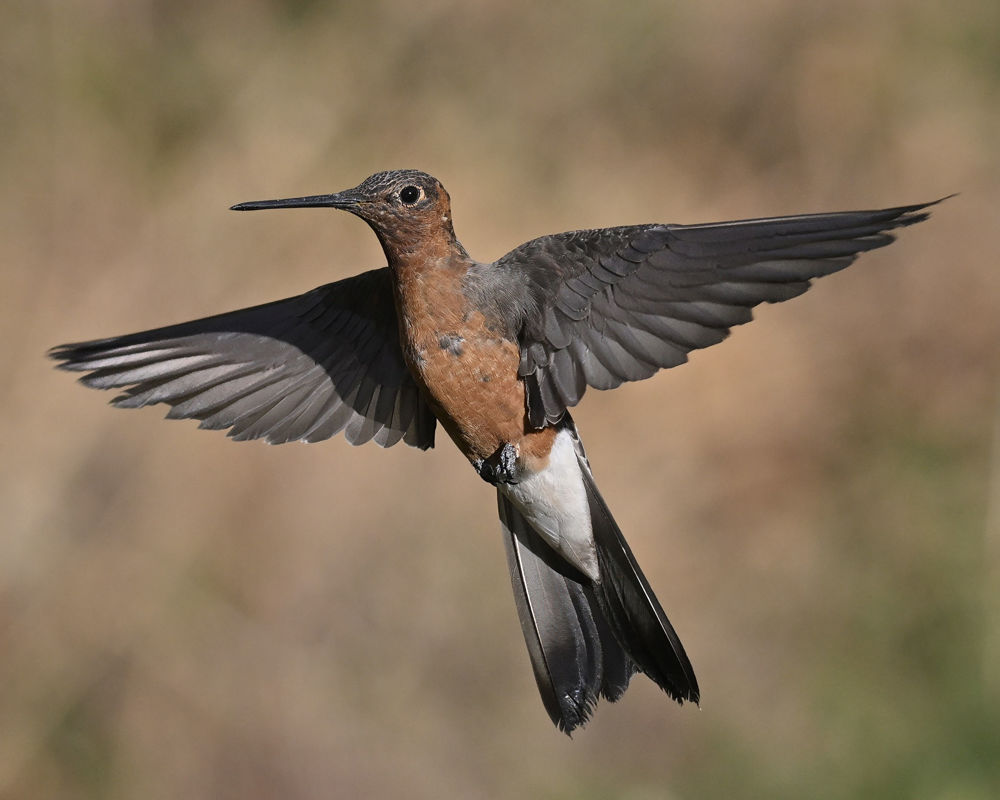
Giant Hummingbird © Alan Bloom
Culinary Journeys and Camaraderie
Of course, no journey in Peru is complete without food. Throughout the trip we enjoyed delicious meals, often in my favorite restaurants. We tried local specialties, from hearty soups to trout dishes, quinoa-based recipes, and the unforgettable cuy (guinea pig) for those willing to be adventurous. Each meal was an opportunity to talk, laugh, and share stories. The group quickly bonded, creating camaraderie that turned ten individuals into a family of travelers.
Reflections and Conclusion
Looking back, this tour embodied exactly what I hoped “Feathers & Traditions” would be. It was not only about the birds, though the list of sightings was extraordinary, with endemics and rarities that any birder would envy. It was also about people, history, food, and the weaving of daily life with the natural world. For me, guiding this group was a privilege. To show them my homeland, to share not only the field marks of a hummingbird but also the stories of my ancestors, to see their delight at both a condor and a woven textile—that is why I guide.
This trip was special in all respects, and I wish to share it with more travelers in future departures. For those who seek birds and culture, landscapes and traditions, feathers and history, Perú awaits.
A complete list of the birds recorded on our tour can be found at: https://ebird.org/tripreport/411857
Description for the next departure of this tour.

